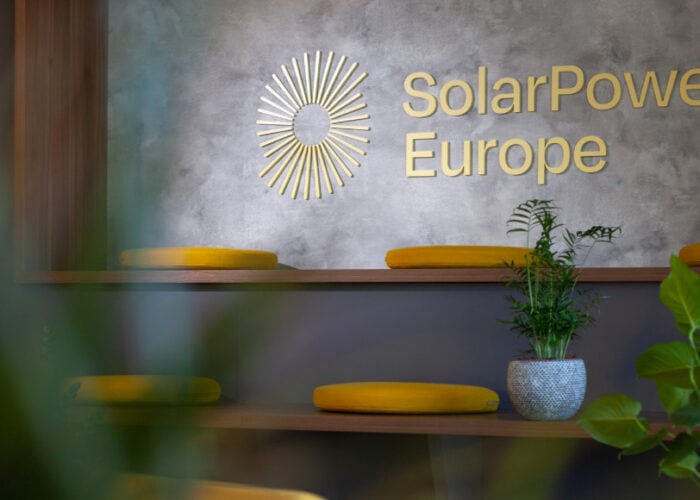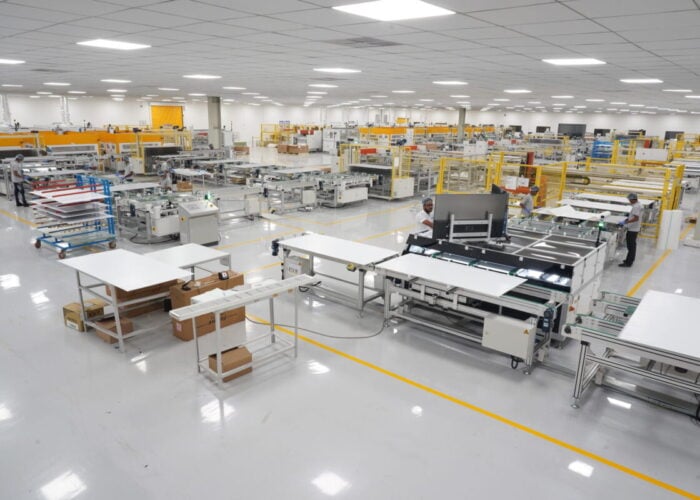In arid regions soiling can greatly impact the energy yield of PV systems and drive up their O&M costs. Benjamin Figgis, Amir Abdallah, Maulid Kivambe, Brahim Aissa, Kamran Ali, Cédric Broussillou and Veronica Bermudez of the Qatar Environment & Energy Research Institute and Klemens Ilse of the Fraunhofer Center for Silicon Photovoltaics review the main challenges associated with soiling of PV plants globally, and the most promising techniques for dust prevention and cleaning in dry climates, drawing on research results from six years of PV performance and soiling studies at the QEERI’s Outdoor Test Facility in Doha.
Try Premium for just $1
- Full premium access for the first month at only $1
- Converts to an annual rate after 30 days unless cancelled
- Cancel anytime during the trial period
Premium Benefits
- Expert industry analysis and interviews
- Digital access to PV Tech Power journal
- Exclusive event discounts
Or get the full Premium subscription right away
Or continue reading this article for free
In 2011, the government of Qatar recommended creating a solar-energy test station to assess the effect of local climate conditions on PV systems. This aimed to study whether the high temperature, humidity and dust could cause PV reliability risks, which had to be quantified and mitigated prior to large-scale development of PV plants. In 2012, the Outdoor Test Facility (OTF) was opened at Qatar Science & Technology Park [1].
Seven years later the OTF, now operated by Qatar Environment & Energy Research Institute (QEERI), has tested over 60 PV modules and found that Tier 1 modules themselves generally cope well with the harsh conditions (they show little electrical or mechanical degradation), but dust accumulation is a challenge. At the OTF, soiling causes the power of PV modules at 22° tilt to decrease by 10-20% per month. The soiling can, in extreme cases, form a homogenous whitish layer that appears visually opaque (Figure 1 left). This dust can however be quite effectively removed by rain, when the rainfall is heavy enough to dissolve the water-soluble components and wash away the particles (Figure 1 right). Actually, after 234 days without rain — the longest dry period experienced on the OTF — the power of never-cleaned modules decreased by 70% so the dust layer was, in effect, still 30% transparent.
Qatar’s case is not the most extreme; soiling rates can reach 1 to 2% per day in some parts of India and China (Figure 2). (“Soiling rate” is typically defined as the decrease in PV performance ratio per day, due to accumulation of pollutants such as dust, pollen, or other organic matter.) A recent comprehensive review of the subject by Ilse et al [2] showed that in dry climates soiling rates are typically in the order of 0.1-1%/day for PV, with the most severe cases reported for concentrated solar power plants (CSP) due to sensitivity of the collector to the optical pathway. Many other locations, including parts of the US, southern Europe and Australia have lower but still problematic rates, in the region of several percent per month. In other words, soiling is a concern for PV plants in much of the world. It is more severe in deserts due to high dust concentration and absence or rain. This results from almost permanent high atmospheric pressure that either prevents clouds forming or depletes them of water. Since few clouds form, they do not reflect sun light back to space, which increases both solar irradiance reaching the ground and moisture evaporation. At the same time, it severely limits the amount of rainfall. Thus, the ground is easily eroded, which generates inorganic dust particles prone to be suspended in air and re-deposited onto PV modules.
![Figure 2. Examples of soiling rates and cleaning costs around the world [2]](https://www.pv-tech.org/wp-content/uploads/2020/11/Fig_2_just_use_B__C.jpg)
Soiling increases the levelised cost of energy (LCOE) in two ways. First, the dust layer reduces the amount of light entering the module, thus lowering the electricity generation. Second, cleaning expenses increase the operation and maintenance (O&M) costs needed to achieve energy yield targets. It is estimated that soiling reduced solar energy production by around 3-4% globally in 2018, causing revenue losses of €3-5 billion(US$3.3-5.5 billion) [2]. Cleaning costs for ground-mounted PV plants vary greatly worldwide (Figure 2) but are typically in the range €0.01-0.1 per m2 for the most-affected countries. These figures reflect the cost of manual cleaning, which is still the norm even in utility-scale plants (emerging technological solutions are discussed below). This cost range is for ground-mounted projects; rooftop cleaning costs considerably more. The economics of PV plants can, in principle, be improved by applying soiling knowledge: more accurate prediction of soiling losses (and thus energy production) at the planned site, and more efficient scheduling of cleaning.
The decision on how often to clean is driven by project-specific parameters — e.g. soiling rate, electricity price, labour cost — so there is no “one size fits all” optimum frequency. According to Dr. Raed Bkayrat, formerly head of First Solar in the Middle East and now with cleaning-robot manufacturer NOMADD, utility PV plants in severe soiling locations such as the UAE are cleaned around 40-45 times per year in order to keep soiling energy loss below 3%, while in milder locations such as Jordan the frequency is around 25-30 times per year.
This is an excerpt from the cover story of PV Tech Power 21. The full feature can be read by downloading a digital copy of PV Tech Power 21, which can be found here, free of charge.





